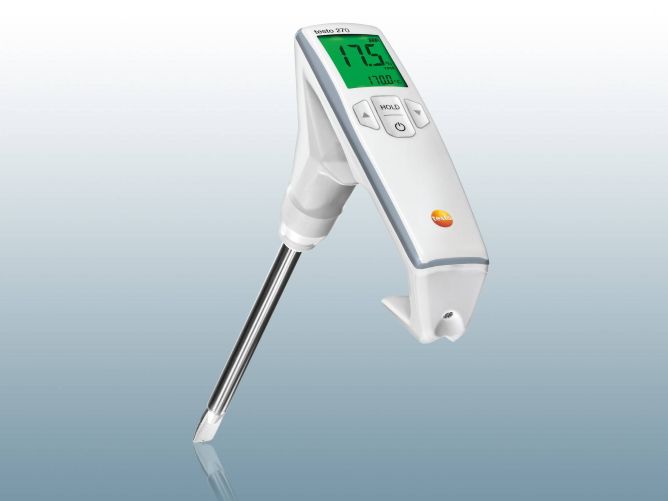

Feasting on a deep-fried chicken wing feels heavenly, right? Cooking oil is used for a number of cooking needs from frying, baking, food preparation, stir-frying, sautéing, flavoring, salad dressings, and much more.
However, when we say you need to adopt cooking oil measurement practices, we talk about quality and not quantity.
Cooking oil, however being used, impacts your health directly. Cooking oil consists of edible vegetable oils derived from several plants and seeds, including sunflower, safflower, olive, groundnuts, soybean, etc.
Its chemical composition consists of around 96% triacylglycerides, composed of different fatty acids.
All other uses of cooking oil mentioned above are usually consumed immediately, except when used for deep frying.
This cooking method uses oil to cook the food. When food is dropped into the oil, the moisture forms steam. In some time, you will see bubbles accumulating around the food, which results in the evaporation of the steam.
In the process, a chemical reaction is initiated by oxygen, water, and steam. We will discuss this in detail sometime.
When you fry food in cooking oil, you need a lot of oil quantity for the process as the food needs to be dipped into the oil completely.
Everything is fine till now. However, once you are done, you will find a lot of oil left in the vessel. We don’t throw away this oil and reuse it for the next meal.
Now that becomes a problem!
What Happens When You Consume Reused Oil?
As seen above, cooking oils are composed of fatty acids, which increase when you reheat the oil.
Reusing oil changes its chemical composition, which is responsible for producing harmful substances that are not good for your health. Reused oil will start tasting and smelling bad, which signifies the oil becoming rancid.
Reheating oil, again and again, initiate reactions like hydrolysis, oxidation, and polymerization. This is the crucial reason for the oil getting contaminated.
Consuming such contaminated oil is hazardous for human health and might increase cardiovascular risk, along with some other serious diseases.
Therefore, cooking oil measurements are primarily done to check the oil quality and determine whether it is fit for consumption or not.
How Is Cooking Oil Measured?
Various degradation substances are produced in the fat due to the aforementioned reactions. These are called as total polar materials(TPM).
In simple terms, TPM is nothing but free fatty acids, monoglycerides, and diglycerides, and a number of oxidation products.
TPMs contaminate the oil and impair its quality. So, when we say measuring cooking oil, we actually measure its TPM. According to FSSAI’s new norms, using cooking oil with more than 25% total polar compounds(TPCs) for frying. At the same time, The EU has adopted a value of 25 to 27% as their acceptable upper limit for fats and oils.
Several methods like column chromatography, capacitive measurement, using a test rod, color check, and identifying the smoke point are used to determine the TPM value.
Among these, one of the handiest and easy methods is using a deep-frying oil tester, which operates on the capacitive measurement principle. Nowadays, you get digital frying oil monitors for the purpose and work much more efficiently and quickly than other methods. Using this single tool is more feasible than other methods that use more apparatus for the examination.
4 Reasons Why You Should Adopt Cooking Oil Measurement Practices?
The TPM proportion for the optimum deep-frying range is approximately between 14% and 20%. By measuring oil regularly, this optimum range can be maintained by mixing older oil with fresh oil, and you get a high quality of taste and crispness.
Large restaurants and food factories must adopt cooking oil measurement practices to serve edible and good-quality fried food to consumers and follow the recommended food safety regulations.
Consuming contaminated oil increases free radicals in the body, resulting in inflammation, which is the root cause of most diseases like obesity, diabetes, and heart disease. It can also reduce immunity and make you prone to infections. Consuming good quality cooking oil keeps you healthy and reduces the risk of serious diseases.
Measuring TPM makes it possible to adjust the fat to the optimum deep-frying range. When the fat is first used, it does not yet contain any flavorings or aromatics. When the fat is first heated, these aromatics are released noticeably, and the fat moves closer to its optimum deep-frying range. This is where the best result for crispness and taste is achieved. As the heating continues, the fat breaks down more and more and becomes inedible.
The advanced digital cooking oil tester found nowadays makes the measuring even more fun with its handy measuring device that quickly tests the decomposition of cooking fats. As the power is supplied by batteries and the built-in sensor, the device is portable, and there are no cables getting in the way.
Conclusion
Eating healthy food is essential to staying healthy. If there is any device that can easily make sure the food you are consuming is safe or not, then do you really need a reason to use it as a precautionary measure?
Earlier times didn’t have this facility, but we have the privilege to enjoy these technological benefits, then why shouldn’t we make its maximum use to stay healthy?
Share your thoughts in the comment section below.
2025 will soon be here, and for most people in the world of online businesses,… Read More
As the frequency of data breaches and identity thefts increases, protecting sensitive information is the… Read More
In the manufacturing industry, maintaining equipment and facilities is critical for smooth operations. Yet, many… Read More
Apple iPhone 16 is faster than its predecessor but how fast? Apple iPhone 16 lineup… Read More
In the ever-evolving landscape of digital marketing, guest posting services have emerged as a cornerstone… Read More
At makesseoweb.com, our approach to guest posting services is designed to maximize your SEO efforts… Read More